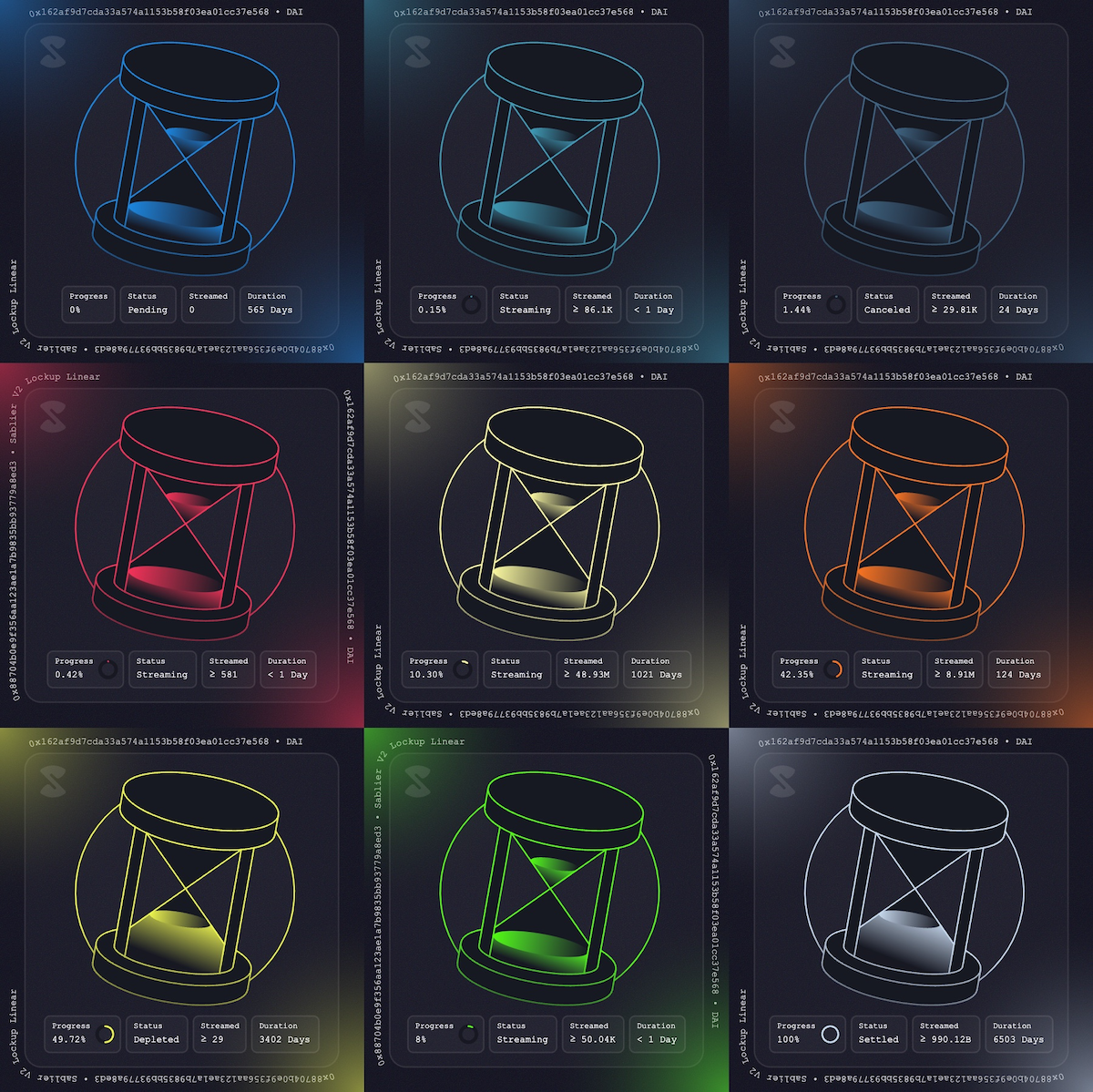NFTs
The Sablier Protocol wraps every stream in an ERC-721 non-fungible token (NFT), making the stream recipient the owner of the NFT. The recipient can transfer the NFT to another address, and this also transfers the right to withdraw funds from the stream, including any funds already streamed.
Integrations
The transferability of the NFT makes Sablier streams tradable and usable as collateral in DeFi. Imagine an NFT lending marketplace that allows users to borrow funds by locking their streams as collateral (effectively borrowing against their future income). Or a decentralized exchange that allows users to trade streams for other assets.
If you're interested in making an integration, please fill out this form and we will try to respond as soon as possible.
Marketplaces
Thanks to adhering to the ERC-721 standard, Sablier streams can be traded and viewed on any NFT marketplace. Here are some of the marketplaces that support Sablier streams:
If you prefer the granularity of a blockchain explorer, you can also view the stream NFTs on Etherscan. See the Deployments page for the full list of addresses.
Caching
The SVG artwork is generated using certain real-time values, such as the current time on the blockchain. However, NFT marketplaces cache the NFT metadata, and this may cause the SVGs might not always be up to date.
The Sablier Protocol triggers ERC-4906 events whenever there's an update in a stream (for instance, when a withdrawal is made). However, it's worth noting that some streams might remain unchanged for an extended period.
To ensure you're viewing the most recent version of the NFT SVG, it's recommended to check the stream directly via the Sablier Interface.
Hourglass SVG
Similar to Uniswap V3 Positions, Sablier V2 Streams are represented as unique on-chain generated hourglass SVGs, which change their color and content based on user data. Here's an example for a stream that is 42.35% way through:
Gallery of Hourglass SVGs
Here's a gallery with multiple Sablier NFT SVGs:
